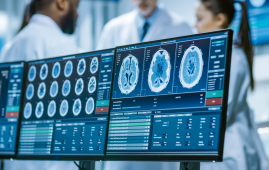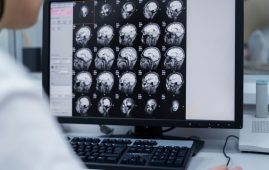

High-Tech Video Optimization in Our Brain: How the Brain Unblurs Vision During Movement
Researchers at the Institute of Science and Technology Austria (ISTA), led by Professor Maximilian Jösch, have discovered how the brain corrects visual distortions caused by movement. This groundbreaking study, published in Nature Neuroscience, reveals that a specific brain region, the ventral lateral geniculate nucleus (vLGN), plays a crucial role in stabilizing vision during motion in animals and likely humans.
The team found that the vLGN, located in the lateral thalamus, integrates motor and sensory signals from across the brain to predict and minimize movement-induced visual distortions. This process, which happens early in visual processing, ensures that images stay sharp even during rapid movement, before the information is passed on to other brain areas responsible for complex visual interpretation.
The discovery came through a combination of advanced techniques, including a custom-built two-photon microscope that allowed the scientists to observe the brains of awake, behaving mice in a virtual reality setup. The researchers observed that the vLGN receives copies of motor commands, which it uses to “unblur” visual signals as the eyes move. This mechanism is akin to how a Formula 1 race car driver’s eye adapts to fast movement, preventing blurriness in the footage, and works similarly to onboard camera stabilization.
Unlike previous studies that focused on later stages of visual processing, this research highlights the importance of compensating for movement early on. It suggests that this core function in the vLGN may be fundamental across the mammalian brain, offering insights that could apply to humans as well.
The team’s use of cutting-edge technologies, including virtual reality and calcium imaging, provided a detailed look at how the brain stabilizes vision during action. This study not only reveals how the brain’s visual system compensates for motion but also opens doors for future research into how these mechanisms function in primates and humans.
More Information: A thalamic hub-and-spoke network enables visual perception during action by coordinating visuomotor dynamics, Nature Neuroscience (2025). DOI: 10.1038/s41593-025-01874-w
more recommended stories
 Brain’s Biological Age Emerges as Key Health Risk Indicator
Brain’s Biological Age Emerges as Key Health Risk IndicatorClinical Significance of Brain Age in.
 Children’s Health in the United States is Declining!
Children’s Health in the United States is Declining!Summary: A comprehensive analysis of U.S..
 Autoimmune Disorders: ADA2 as a Therapeutic Target
Autoimmune Disorders: ADA2 as a Therapeutic TargetAdenosine deaminase 2 (ADA2) has emerged.
 Is Prediabetes Reversible through Exercise?
Is Prediabetes Reversible through Exercise?150 Minutes of Weekly Exercise May.
 Conversational Brain Encoding Revealed in New Study
Conversational Brain Encoding Revealed in New StudyConversational Brain Encoding Revealed in New.
 New Blood Cancer Model Unveils Drug Resistance
New Blood Cancer Model Unveils Drug ResistanceNew Lab Model Reveals Gene Mutation.
 Healthy Habits Slash Diverticulitis Risk in Half: Clinical Insights
Healthy Habits Slash Diverticulitis Risk in Half: Clinical InsightsHealthy Habits Slash Diverticulitis Risk in.
 Caffeine and SIDS: A New Prevention Theory
Caffeine and SIDS: A New Prevention TheoryFor the first time in decades,.
 Microbial Metabolites Reveal Health Insights
Microbial Metabolites Reveal Health InsightsThe human body is not just.
 Reelin and Cocaine Addiction: A Breakthrough Study
Reelin and Cocaine Addiction: A Breakthrough StudyA groundbreaking study from the University.

Leave a Comment